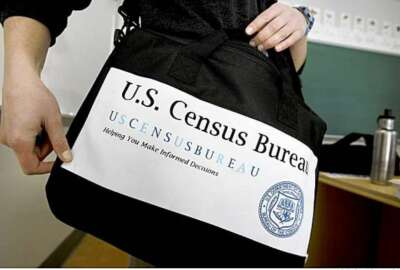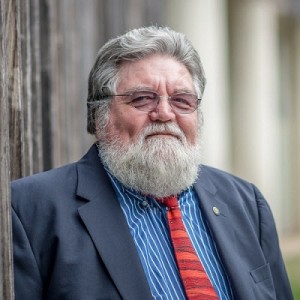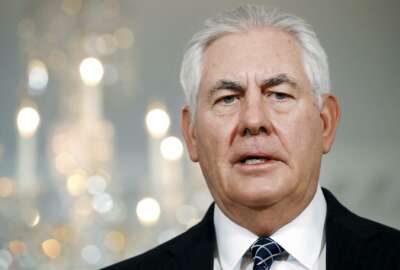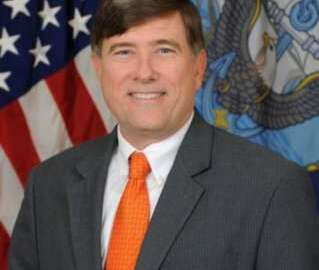
Census CISO to retire; DHS, State name new cyber leaders
Mark Kneidinger becomes the deputy director of DHS’ new National Risk Management Center to further add to the organization’s leadership ranks.
Best listening experience is on Chrome, Firefox or Safari. Subscribe to Federal Drive’s daily audio interviews on Apple Podcasts or PodcastOne.
The federal cybersecurity landscape is seeing several shifts in terms of the people who manage, oversee and secure federal networks, systems and applications.
First, Tim Ruland, the chief information security officer at the Census Bureau, is retiring on Sept. 27.
Ruland, who has been working part-time at Census over the last few months, will leave after more than 40 years of federal service, including being in the charge of the decennial count’s cybersecurity since 1998.
He said he plans to relax and travel during retirement, but may decide to work part time or contribute to the federal community in another way.
Ruland leaves the Census at a critical time as the bureau prepares for the 2020 count. The Government Accountability Office found that Census, as of June, had reported 3,100 security weaknesses “that need to be addressed in the coming months.”
Census and the Commerce Department, more generally, recognize their cyber challenges. Commerce Chief Information Officer Rod Turk wrote in an Aug. 31 blog post, shortly after the GAO report came out, that the “Census Bureau engages in a multi-stakeholder approach across the Federal government, intelligence community, and industry to implement the best tools to secure their data. The security of the 2020 Decennial Census is strengthened by this cybersecurity partnership and network.”

Ruland also spent 13 years on active duty in the Army where he worked for the Army Security Agency and the Intelligence and Security Command as a linguist and analyst.
“Now for some new adventures with my wife traveling the U.S. on our Harleys and by car, learning how to be a better cook and just enjoying life,” Ruland wrote on a LinkedIn post. “To all I have worked with I enjoyed the opportunities, for those I have met professionally I appreciate your work and have learned something from each and every one of you. So to all, farewell and keep us safe going forward.”
While Ruland joins an ever-growing number of senior executives leaving government, five others found new permanent positions.
Mark Kneidinger, the director of Cybersecurity and Communications Federal Network Resilience Division (FNR) in the Homeland Security Department, will join the new the National Risk Management Center as the deputy director. DHS named Bob Kolasky to lead the new center in early August.
In an internal newsletter obtained by Federal News Radio, Emily Early, the National Protection and Programs Directorate’s chief of staff, wrote Matt Hartman will serve as acting director of CS&C while Mike Duffy will serve as acting deputy director for FNR.
Kneidinger led FNR since 2015 and has been with the office since 2013.
Before that, he worked for private sector companies including CSC and CACI, and was the CIO for state offices in New York and Virginia.
Hartman has been with DHS since 2010, having spent four years working as acting program manager and deputy program manager of the continuous diagnostics and mitigation (CDM) program.
At the State Department, Lonnie Price gets to finally remove the “acting” title from his business cards and is the permanent deputy assistant secretary and assistant director for the Cyber and Technology Security Directorate, which falls within the Diplomatic Security Service.
State created the new directorate in August 2017 to provide “advanced cyber threat analysis, incident detection and response, cyber investigative support and emerging technology solutions.”
The agency named Price as the new organization’s interim director a year ago. He has been with State since 1987, serving as a security engineer, director of the Countermeasures Division and most recently director of the Office of Security Technology, according to his LinkedIn profile.
New CIOs at GPO, NCUA
The Government Publishing Office and the National Credit Union Administration named new CIOs as well.
GPO announced Sept. 10 it has selected Sam Musa as its new CIO, replacing Tracee Boxley, who left the agency in January. Layton Clay has been the acting CIO since Boxley left.
Musa comes to GPO from after serving as the chief of IT services for the Equal Employment Opportunity Commission (EEOC) for the last 10 years, where he oversaw the help desk, desktop security, training, audio visual/video teleconferencing services, mobile devices and security audits.
Prior to EEOC, Musa served as an information systems security manager at the National Weather Service (NWS) and as an information systems program manager at the FBI.
He also teaches network/cybersecurity courses at the University of Maryland University College. Musa received a Doctorate degree in business administration from the National Graduate School, holds a Master’s Degree in public service from Fort Hays State University and a Master’s Degree in telecommunications from George Mason University.
It took Rob Foster just about a year to become the CIO at NCUA after joining the organization as deputy CIO in August 2017.
NCUA Board Chairman J. Mark McWatters announced Foster’s promotion on Sept. 4.
Foster joined NCUA last year after spending the previous two years as the Department of Navy CIO and also served as the deputy CIO at the Department of Health and Human Services.
Finally, Pamela Wise-Martinez joined the Energy Department’s Energy Information Administration on Sept. 4 as its chief architect. She comes to EIA after spending the last three years being the chief cloud and enterprise architect at the Pension Benefit Guaranty Corporation (PBGC).
This is Wise-Martinez’s second time at Energy. She was NNSA’s chief architect from 2010 to 2013 before moving to the Office of the Director of National Intelligence. She also worked at DHS, the Interior Department and the Securities and Exchange Commission.
Copyright © 2025 Federal News Network. All rights reserved. This website is not intended for users located within the European Economic Area.
Jason Miller is executive editor of Federal News Network and directs news coverage on the people, policy and programs of the federal government.
Follow @jmillerWFED
Related Stories

DHS moving quickly to get National Risk Management Center off the ground





